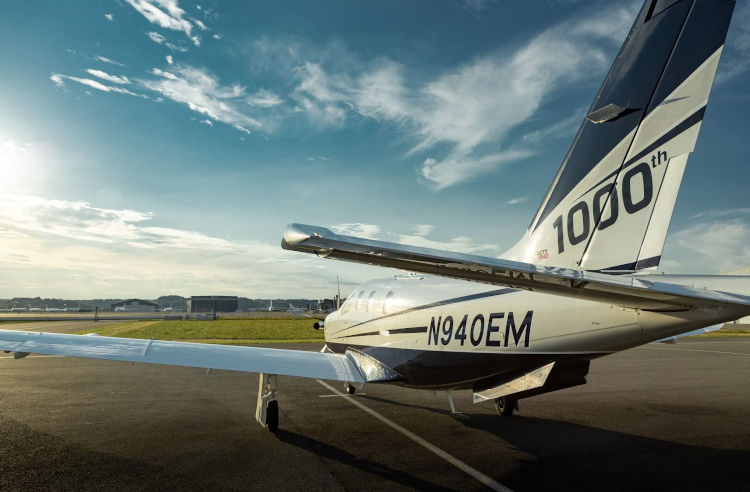Daher has rolled out the 1,000th fast turboprop aircraft and delivered it to a customer. A top-of-the-line TBM 940 version went to an owner/operator in the United States. TBM maintains a solid market position in the entry-level turboprop segment designed in a 5 passenger plus 1 pilot configuration.
The initial TBM 700 was introduced in 1990, and since then the aircraft has been on a steady improvement in performance equipment, and feature enhancements. This owner flown turboprop is in a class of its own with the fastest high speed and long-range cruise performance specifications.
When the TBM originally was launched there was some aviation sector skepticism about the market attractiveness of a pressurized single-engine turboprop airplane. Reaching the 1,000 aircraft milestone certainly allays any doubts about the market interest in these aircraft.

“The Daher group and its employees take particular pride in reaching the TBM’s 1,000 mark,” stated Didier Kayat, the CEO of Daher. “We have made significant investment since integrating the TBM into Daher’s business portfolio, and now it is a major asset for our overall industrial activity.”
Nicolas Chabbert, the Senior Vice President of Daher’s Aircraft Division, added: “Looking ahead to the next 1,000 TBMs, we maintain our firm commitment to continue delivering aircraft that provide the optimum combination of speed and operational efficiency for owners and operators, along with the highest levels of safety and protection for pilots, families and passengers.”
Daher’s introduction of the TBM e-copilot for reduced pilot workload – including flight envelope protection, auto throttle, as well as automatic icing detection; along with the 2020 certification of the HomeSafe emergency autoland system that automatically brings the aircraft to a runway touchdown if the pilot becomes incapacitated, stands out as best in class features.
Daher also added interior enhancements that range from upgrades for comfort and style to the availability of a quick-change lavatory compartment in the aft cabin, while the service innovations include the “Me & My TBM” application for Android and iOS devices that provides unique and valuable feedback on TBM flights and maintenance.
The TBM 900-series aircraft currently in production by Daher represent the sixth primary step for the family, and are offered in two production versions: the TBM 940 incorporates Garmin’s G3000 avionics with the new HomeSafe emergency autoland function, auto-throttle and touch screen controls.
Daher’s official handover of the 1,000th TBM was made to the customer at the company’s Pompano Beach, Florida operation, with the milestone aircraft received by a U.S. based owner/operator: James A. Hislop. An experienced private pilot and investment banker, Hislop is the co-founder and managing director of two private equity investment firms. He also is involved in charitable activities, serving as a volunteer pilot with Mercy Flights Southeast, Angel Flights Northeast, and Patient Airlift Services.
“I looked at just about every airplane on the market that would fit my criteria in terms of safety, reliability, style and performance,” Hislop explained. “The TBM 940 topped the list in the areas of speed, range and payload, while also incorporating all of the safety features. It is built more to a commercial grade compared to general aviation standards; the cabin comfort is excellent; and the ‘ramp appeal’ is simply stunning.”
At Aircraft Budget Analyzer we looked at the operating costs for the TBM 940, assuming an owner flies 250 hours a year and fuel is at $4.20 per gallon, the all in hourly operating cost is $1,272 per hour, including all fixed and variable costs. As an alternative scenario, if the owner flies 200 hours a year and can charter the aircraft out for 100 hours a year at $1,350 per hour, then the owners’ effective net cost per hour is $938 per hour for each of their 200 occupied flight hours.
To compare the operating costs of the TBM 940 to competitors such as the Pilatus PC-12 or Nextant G90XT buy a 3 plane cost comparison report or subscribe for a full years access to run multiple aircraft cost comparisons. Both options let you customize the analysis to suit the number of hours you plan to use the aircraft and the hours you plan to charter it out.